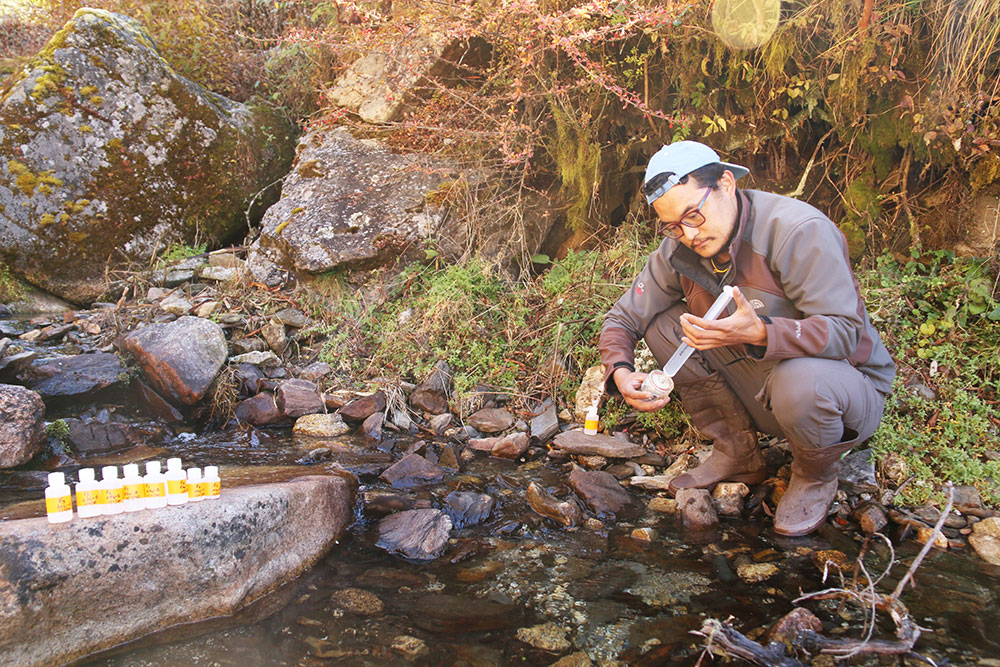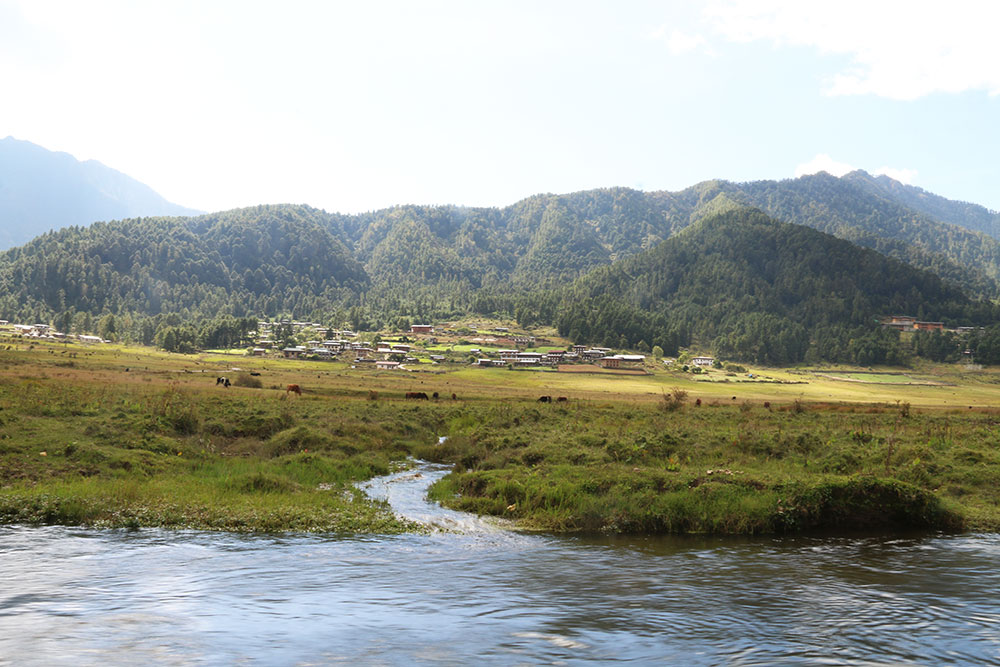A study in 2020 applied the Driver-Pressure-State-Impact-Response (DPSIR) framework to evaluate the factors that impact the water quality of the Gangtey-Phobji wetland in Bhutan, a Ramsar-listed wetland that plays a vital role in conserving the Black-necked Crane (BNC). The evaluation of the wetland’s water quality is carried out in relation to its land use and land cover (LULC) and that of its catchment. Different riparian land use types were assessed for various discharge and water quality parameters such as dissolved oxygen, electrical conductivity, pH, temperature, and turbidity at 22 different sites using a nested catchment sampling design. Moreover, water samples were collected for laboratory analysis of nitrogen and phosphorus concentrations. The study also identifies key stakeholders responsible for managing water quality in the wetland and recommends potential responses.
The importance of Gangtey-Phobji wetland is undisputed as it serves as the largest wintering habitat for BNCs in Bhutan and provides invaluable benefits to its inhabitants through numerous ecosystem services. However, the over-exploitation of ecosystem services and economic opportunities offered by the wetland has caused its degradation. The wetland is affected by major drivers such as conventional agriculture expansion, tourism-driven infrastructure development, and pressure from livestock grazing. The study establishes a correlation between anthropogenic land use and reduced water quality, which is an important indicator of the wetland’s habitat quality. Nutrient inputs from agriculture, built-up areas, and livestock grazing have potentially led to higher loads and yields of nutrients like nitrogen, and phosphorus and higher dissolved and suspended solids, and higher turbidity, as evidenced by a trend of reduced water quality in the marshland.

Sampling at the wetland tributaries
The study identifies the government ministries, their sister agencies, and NGOs as the key stakeholders who can bring about the necessary change. Therefore, it is recommended to improve management responses to mitigate the effects of these developments on the wetland and its ecosystem services. The active participation of relevant stakeholders, their collaboration, and the implementation of intended plans and policies need to be emphasized to ensure the conservation and “wise use” of the wetland. Based on the findings, the study proposes the following recommendations: Regulation of primary factors depleting water quality and natural land use in the wetland and its catchment; Pilot and initiation of organic farming for Gangtey and Phobji Gewogs to reduce nutrient loading to the wetland; Implementation of a “high-value low volume” tourism policy with due consideration of rapid tourism infrastructure development in the fragile and protected wetland ecosystem; Mitigation of pressures from livestock grazing, particularly in the core zone of the wetland; and Strengthening of the mandates and responsibilities of the Gangtey-Phobji Environment Management Committee to promote integrated management of the wetland through stakeholder engagement and people’s participation. Additionally, the study recommends the initiation of long-term research and monitoring of LULC change and water quality relations to guide future intervention measures. The detailed study titled ‘Land use effects on water quality of Gangtey-Phobji wetland in Bhutan and opportunities to mitigate degradation’ can be accessed online.
The article is published based on personal experiences and observations by a group of water researchers from Bhutan. The group can be contacted at waterresearchbhutan@gmail.com


